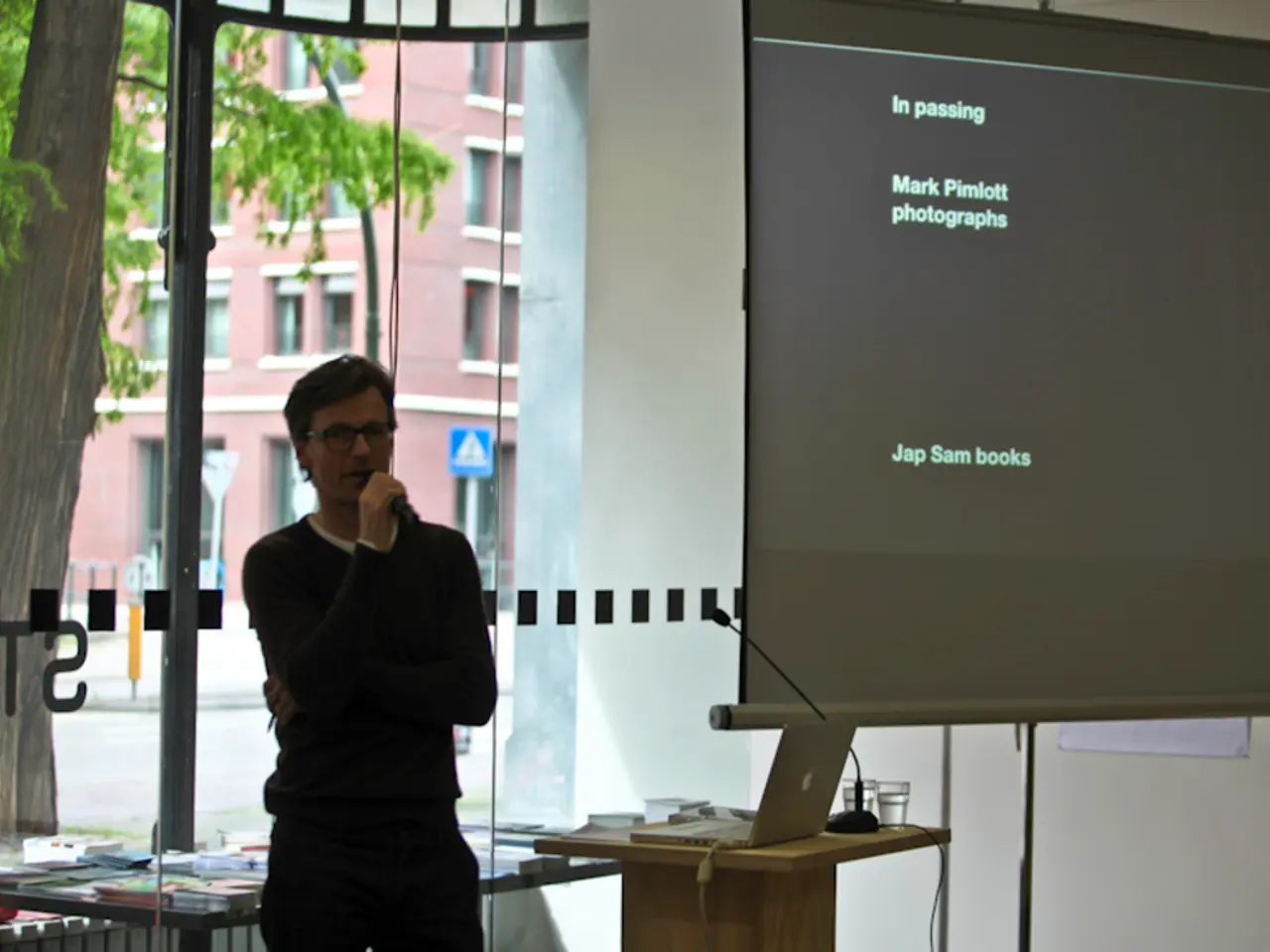Transforming the Contemporary Workplace for Enhanced Efficiency and Tranquility: Amplifying Productivity and Peace in Today's Busy Offices
In today's fast-paced work environment, creating a workspace that fosters focus, creativity, and well-being is more important than ever. A mindful workspace, designed with ergonomics, natural light, biophilic design, personalized calming touches, and flexible, activity-based layouts, can help achieve this balance.
Prioritizing Ergonomics
A key component of a mindful workspace is an ergonomic setup. By using chairs and desks that support good posture, discomfort and physical distractions are minimized, allowing employees to focus on their tasks. The workspace layout should also promote efficient workflows without clutter.
Natural Light and Biophilic Elements
Incorporating plants and views of nature or green spaces is essential in a mindful workspace. These elements help reduce stress and enhance cognitive function. Natural light or lighting with cooler color temperatures (around 5000K) in focus areas supports alertness, while warmer tones (around 3000K) in social/creative spaces create calming atmospheres.
Activity-Based Work Zones
Designing different areas specialized for focus, collaboration, phone calls, and creative thinking is crucial. These zones are designed to minimize distractions and provide employees with the appropriate environment for different work modes and moods.
Personalization with Calming Elements
Allowing employees to add personal touches like plants, photos, or soft lighting can boost well-being and feelings of ownership over their space. This encourages relaxation and motivation.
Noise and Visual Barriers
Managing noise with sound-absorbing materials and creating psychological boundaries using plants, screens, or artwork can help minimize interruptions and help sustain concentration.
Mindfulness Resources and Culture
Providing access to meditation areas or mindfulness workshops and encouraging short daily meditation or gratitude practices can improve mental resilience and focus.
Comfort in Temperature and Air Quality
Maintaining a comfortable temperature and good ventilation is essential to prevent fatigue and distraction, promoting sustained concentration and well-being.
By integrating these components, a mindful workspace balances calmness with efficiency, supporting mental and physical needs, minimizing interruptions, and offering spaces designed for different work modes and moods. This, in turn, enhances focus, creativity, and overall well-being.
Advanced Techniques for Deepening Mindfulness
Mindful leadership, emotional intelligence, and promoting a culture of mindfulness are advanced techniques for deepening mindfulness in the workplace. Many companies offer training programs on conflict resolution and emotional intelligence, integrating mindfulness-based techniques can help employees better navigate interpersonal challenges.
Taking short, mindful breaks throughout the day can significantly improve focus and productivity. Incorporating physical activity into the workday, such as yoga or walking, can reduce stress and help employees re-energize. Encouraging mindful eating during breaks can help reduce stress and promote a healthier work culture.
Digital detoxes can help employees recharge and reconnect with their work without being distracted by the constant flow of notifications. Implementing guidelines around technology usage that encourage employees to use tools mindfully can reduce multitasking fatigue and improve focus.
Creating a mindful workspace requires continuous efforts to maintain and evolve the space in response to the changing needs of employees and the organization.
Research shows that mindfulness practices can enhance focus, emotional intelligence, and cognitive performance, reducing stress levels, increasing attention span, and improving decision-making abilities. A mindful workspace can have profound psychological benefits, including reduced stress, increased job satisfaction, and fostering creativity and innovation. Employees in a mindful workspace can expect reduced stress, improved focus, increased creativity, and enhanced well-being, leading to greater job satisfaction, better mental health, and improved overall productivity.
- A well-designed chair and desk that support good posture, part of an ergonomic setup in a mindful workspace, minimizes discomfort and physical distractions.
- Incorporating plants, views of nature, or green spaces into a workspace helps reduce stress and enhance cognitive function.
- Activity-based work zones, each specialized for focus, collaboration, phone calls, and creative thinking, provide employees with the appropriate environment for different work modes and moods.
- Personal touches like plants, photos, or soft lighting can boost well-being and feelings of ownership over a workspace, encouraging relaxation and motivation.
- Noise and visual barriers, such as sound-absorbing materials and psychological boundaries using plants, screens, or artwork, help minimize interruptions and sustain concentration.
- Mindfulness resources like meditation areas, mindfulness workshops, or short daily meditation or gratitude practices can improve mental resilience and focus.
- Comfortable temperature, good ventilation, and quality air are essential to prevent fatigue and distraction, promoting sustained concentration and well-being.
- Mindful leadership, emotional intelligence, promoting a culture of mindfulness, conflict resolution training, and integrated mindfulness-based techniques can help employees better navigate interpersonal challenges, improving focus, productivity, and overall health and wellness.




